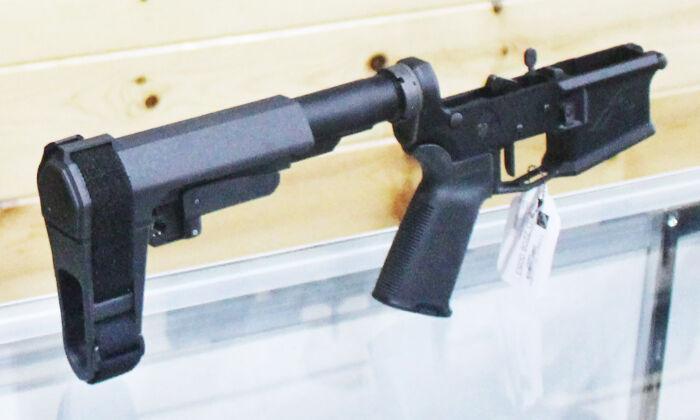A federal judge in Texas has overturned a rule issued by the Bureau of Alcohol Tobacco, Firearms and Explosives (ATF) that targeted pistol attachments known as “stabilizing braces” or “pistol braces” and treated pistols fitted with such devices as short-barreled rifles, subjecting them to various restrictions.
“The Court finds that the adaptation of the Final Rule was arbitrary and capricious for two reasons,” Judge O'Connor wrote. “First, the Defendants did not provide a detailed justification for their reversal of the agency’s longstanding position. And second, the Final Rule’s standards are impermissibly vague.”
The judge granted the plaintiffs’ motion for summary judgment and ordered the rule vacated. The plaintiffs in this case are two individual members of the Firearms Policy Coalition (FPC), Maxim Defense, and FPC.
FPC President Brandon Combs said the ATF had “lawlessly acted to turn millions of gun owners into felons.”
“FPC members should be proud of what was accomplished today. We look forward to defending this victory on appeal and up to the Supreme Court, just as we have in other cases,” Mr. Combs said in a statement.
He said he expects the defendants, which include the ATF and the Department of Justice (DOJ), to appeal.
Background
The pistol stabilizing brace was invented more than a decade ago to assist the disabled and others who may need help shooting large-format pistols built on the AR-15 and similar platforms. The accessory attaches to the rear of the pistol and the shooter’s forearm, enabling a steadier aim while holding the firearm with one hand.Short-barreled rifles are subject to more strict regulations under the National Firearms Act (NFA), with those found in possession of unregistered NFA firearms can face fines of up to $10,000, ten years in prison, and a felony conviction that would disqualify them from future firearm ownership.
Tim Harmsen, an Indiana-based firearms dealer, told The Epoch Times in an earlier interview that, in his view, the ATF’s stabilizing brace rule was part of a broader strategy of gun control “by a thousand cuts.”
On the campaign trail and since taking office, President Biden has pledged to get tougher on guns, citing the need to curb gun-related violence.
President Biden has publicly said he would back measures that ban magazines that carry 10 rounds or more—which are common and are owned by millions of Americans—and so-called assault weapons.
The number of Americans impacted by the ATF’s brace rule is difficult to determine. The ATF estimates that 3 million pistol braces have been sold. Second Amendment advocates say the number is closer to 40 million.







